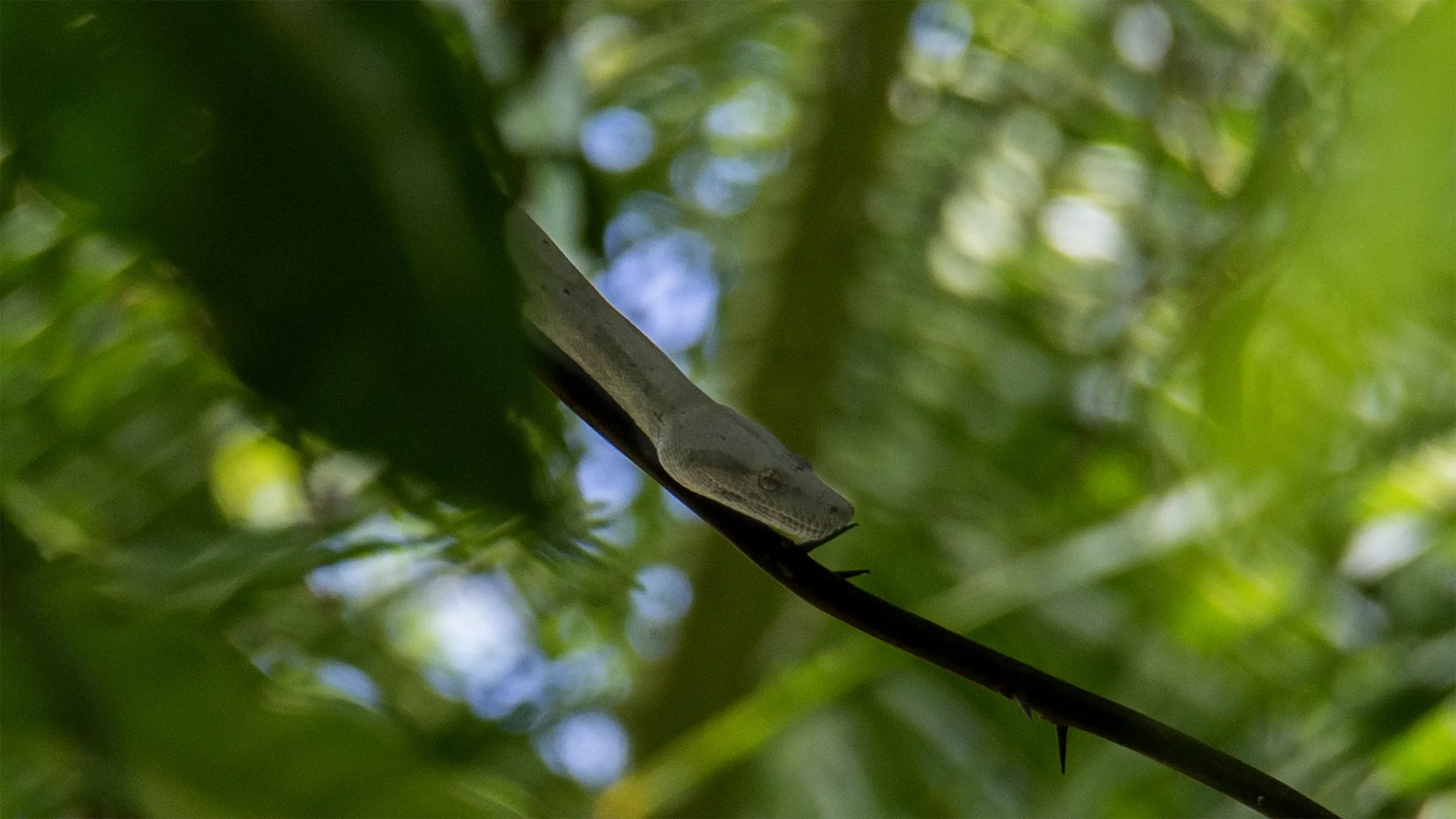The Pink Boa of Cayos Cochinos

The Pink Boa also known as Boa Constrictor Imperator is an Endemic Species of Honduras . It suffers from predation by poaching for sale to collectors and is an endangered species.
According to scientists, it looks more like its Roatan counterpart than the land-dwelling species. Their migration is believed to have occurred thousands of years ago at a time when the islands were connected by land.
Where is it located?
The Pink Boa lives only on the two islands of Cayos Cochinos known as Cayo Mayor and Cayo Menor. His closest relatives live on the mainland and on the island of Roatán; All these animal species have a lot of genetic similarity, however they are not identical. Several scientists have conducted research to determine the characteristics of this unique species from Honduras.
Dr. Steve Green , scientist and the highest authority on the subject, genetically analyzed the boas of Cayos Cochinos, Roatán, Utila and the mainland; he thinks there are several ways the boas could get there. Research has even proposed that this reptile, which has a pinkish coloration as a camouflage strategy in the vegetation, could have arrived aboard a tree trunk floating from the mainland.
But their strongest hypothesis is that thousands of years ago, when the islands were connected to the mainland, the boas were able to travel freely through a land corridor that connected the Bay Islands to the mainland. Then, the water covered said corridor, leaving some isolated boas in Cayos Cochinos where they have evolved adapting to the conditions offered by the natural environment.
Characteristics
It differs from the Boa constrictor by its tonality, which is substantially lighter: a greyish pinkish tone for which it receives its name and which is due to a reduction in melanin that causes a lighter tonality. Its tail retains a distinctive darker color that can vary from orange to salmon pink.
It is a smaller species, the female reaches up to 1.2 meters and the male almost one meter.
Reproduction
The Boa constrictor not lay eggs: they are viviparous, giving birth to 10 to 64 pups at a time, usually in the months from March to August. The biologist Leonel Marineros in his book “Serpientes de Honduras”, cites the testimony of Adonis Cubas, who worked at the scientific station, who between March and July found newly hatched pink boas cooling in streams of both Keys [3]. Perhaps the coincidence is due to the fact that they belong to the same species.
There is now general agreement that the Cayos Cochinos pink boa is part of the Boa constrictor
Scientific Investigations
In 1991 Price and Russo suggested that the smaller boas, both from Cayos Cochinos and from the Bay Islands, could be a species other than the constrictor . They were right? It is an issue that is still being discussed.
James McCranie, author of the most up-to-date and comprehensive work on snakes from Honduras, mentions that Boback and Carpenter in 2007 demonstrated that the remarkable differences in head size and shape between the populations of Boa constrictor from the Belize Keys and the mainland they were an adaptation to available food sources.
It concludes that, being Belize a nearby country, probably the same factor influences the boas of Cayos Cochinos [1]. Although there is no evidence, we can suspect that the color is also caused by the same reason.
Montgomery, Boback et al. Consider the rosy boa a Boa constrictor of the imperator subspecies , but dwarf . They also say that due to their color and docility, (they are much less aggressive than continental boas) the brutal traffic as pets put them on the brink of extinction. They mention that in the early ’90s Wilson and Cruz Diaz, on a five-day herpetological exploration trip, did not find a single specimen [2].
History changed with the arrival in 1994 of what is now the Cayos Cochinos Foundation and the elevation of its status as a protected area in 2003 to a Natural Marine Monument of the Cayos Cochinos Archipelago . According to the same publication, in 2015 the population had grown to about 3,000 pink boas, added both Keys.
References
[1] McCranie, James R., “The snakes of Honduras”, Society for the study of amphibians and reptiles, 2011, p.63
[2] Montgomery, Chad E., Boback, Scott M. and other contributors, “Cayos Cochinos Boa, Boa constrictor imperator”, Convention on International Trade in Endangered Species of Wild Fauna and Flora (CITES), Tel Aviv, Twenty-eighth meeting of the Animals Committee, Tel Aviv (Israel), 30 August-3 September 2015, AC28 Inf. 7, p.1
[3] Marineros, Leonel, “Guide to the snakes of Honduras”, Author’s edition sponsored by the General Directorate of Biodiversity (DiBio), Secretariat of Natural Resources and Environment, SERNA), Tegucigalpa, Honduras, 2000, p.43
Fountain
- The Pink Boa of the Honduran Cayos Cochinos (by Pablo R. Bedrossian)


